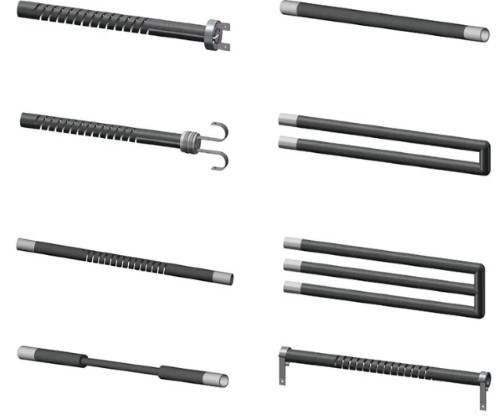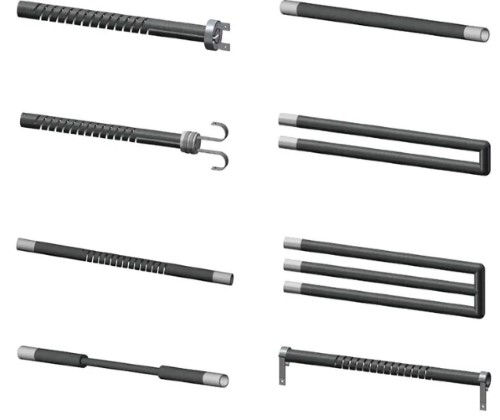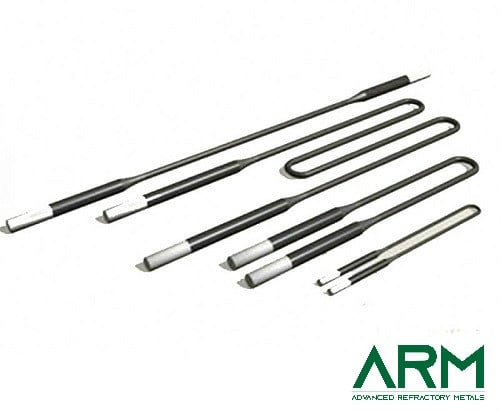Comparison of Heating Element Materials

Heating elements are essential components in various industrial, commercial, and domestic applications. This article compares the most commonly used heating element materials, discussing their properties and applications.
1. Nichrome (Nickel-Chromium Alloy)
Nichrome is one of the most widely used heating element materials due to its excellent resistance to oxidation and high-temperature stability.
It has high electrical resistivity, which makes it effective for converting electrical energy into heat. Additionally, Nichrome exhibits excellent oxidation and corrosion resistance, allowing it to maintain performance over time. With a high melting point of approximately 1400°C and good mechanical strength, it is a durable choice for heating applications.
Nichrome is commonly used in electric ovens, toasters, hairdryers, industrial furnaces, and laboratory heating devices.

2. Kanthal (Iron-Chromium-Aluminum Alloy)
Kanthal is a preferred material in high-temperature applications due to its superior oxidation resistance and longevity.
It has higher resistivity than Nichrome and demonstrates excellent strength at elevated temperatures, with a melting point of around 1500°C. One of its notable characteristics is the formation of a protective aluminum oxide layer, which enhances its durability and prevents rapid degradation.
Kanthal is also a cost-effective alternative to Nichrome. It is frequently used in industrial furnaces, glass processing, ceramic kilns, and heating tapes and wires.
3. Tungsten
Tungsten is used in extreme high-temperature environments where conventional materials fail.
It possesses an extremely high melting point of approximately 3422°C, making it suitable for applications requiring extreme heat. Tungsten also has high thermal conductivity, which ensures efficient heat transfer. However, it is brittle at room temperature and requires an inert or vacuum environment to prevent oxidation.
Due to these properties, Tungsten is commonly used in high-temperature furnaces, aerospace applications, halogen and incandescent light bulbs, and electron beam heating elements.

4. Molybdenum Disilicide (MoSi2)
Molybdenum disilicide is a ceramic-based material known for its excellent oxidation resistance.
It can withstand high temperatures up to 1800°C and forms a self-healing protective silica layer, which prevents degradation. Although it is brittle, it can endure thermal cycling without significant deterioration.
Additionally, Molybdenum disilicide offers good electrical conductivity, making it suitable for high-temperature furnaces used in glass, ceramics, and metallurgy. It is also utilized in aerospace applications, kilns, and sintering operations.
5. Silicon Carbide (SiC)
Silicon carbide heating elements are commonly used in extreme industrial environments.
This material can withstand temperatures up to 1600°C and has high thermal shock resistance, which allows it to function efficiently in fluctuating temperatures. It is chemically stable and resistant to oxidation, making it a long-lasting option in controlled environments.
Silicon carbide heating elements are frequently used in high-temperature industrial furnaces, semiconductor manufacturing, glass processing, and powder metallurgy.
6. Graphite
Graphite heating elements are widely used in applications that require high electrical and thermal conductivity.
This material can withstand temperatures up to 3000°C in inert conditions, making it suitable for extreme environments. Graphite offers good electrical and thermal conductivity, but it requires a protective atmosphere to prevent oxidation. It is also lightweight compared to metals, which provides additional advantages in specific applications.
Graphite heating elements are utilized in vacuum and inert atmosphere furnaces, continuous metal casting, semiconductor manufacturing, and chemical vapor deposition (CVD) systems.
Summary Table
|
Material |
Melting Point (°C) |
Key Properties |
Common Applications |
|
Nichrome (Ni-Cr) |
~1400 |
High resistivity, oxidation-resistant, durable |
Ovens, toasters, hairdryers, furnaces |
|
Kanthal (Fe-Cr-Al) |
~1500 |
Oxidation-resistant, forms protective layer |
Industrial furnaces, glass processing |
|
~3422 |
High thermal conductivity, brittle |
Aerospace, light bulbs, electron beam heating |
|
|
~1800 |
Self-healing silica layer, high-temperature use |
High-temp furnaces, aerospace, kilns |
|
|
Silicon Carbide (SiC) |
~1600 |
Thermal shock-resistant, oxidation-resistant |
Industrial furnaces, semiconductors |
|
Graphite |
~3000 (inert) |
High conductivity, lightweight, needs protection |
Semiconductor manufacturing, vacuum furnaces |
For more heating elements and heat resistant materials, please check Advanced Refractory Metals (ARM).
Conclusion
The choice of heating element material depends on the specific requirements of the application, including temperature range, oxidation resistance, electrical conductivity, and mechanical strength.
Nichrome and Kanthal are ideal for general heating applications due to their high resistivity and durability. Tungsten, Molybdenum Disilicide, and Silicon Carbide are preferred for extreme temperature environments where stability and heat resistance are crucial. Graphite is an excellent choice for specialized high-temperature and controlled-atmosphere applications.
{{item.content}}
LEVE A REPLY
{{item.children[0].content}}
{{item.content}}






